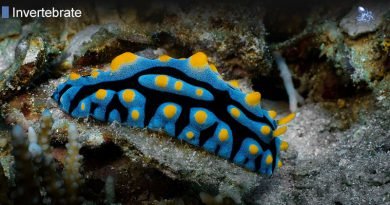A Lobsters Teeth Are In Its Stomach
Lobsters are a family of large crustaceans dwelling the world’s seas. They have been around for millions of years. The first predatory lobsters probably roamed the primeval oceans and it was millions of years ago that they switched to the omnivorous lifestyle that characterizes them today.
Lobsters are invertebrates. They have a hard exoskeleton, an external shield that protects the animal’s soft, fragile and vulnerable body. They are arthropods, meaning that they have a segmented body and five pairs of legs, all being used for walking, out of which three pairs have claws; the first pair is much larger and much stronger than the others. The body of the lobsters is symmetrical in the case of most species, but some species, notably the ones living in more turbulent waters, are asymmetrical, with one side of their body being more developed than the other to make moving sideways easier for the animal. They have a cephalothorax, a head and thorax fused together and completely covered in the exoskeleton. Lobsters have complex heads, with antennae, strong mouthparts that look like jaws and multiple maxillae, structures that come in pairs and are used for manipulating food.
Lobsters catch their food and digest it using very unusual methods. Their limbs display chemosensory features, which means that they practically use their legs for tasting their meals. The other extraordinary feature related to feeding is that they break up their food with the strong teeth located inside their stomachs. The lobster’s stomach is behind its eyes and it comprises an organ called the gastric mill, equipped with three surfaces used for grinding they prey captured by the animal.
The prey that lobsters are after includes small shrimp, mussels, sea urchins, crabs, tiny fish and other small-sized inhabitants of the sea. However, in periods when food is available to them in scarcity, they are known to turn against each other as well, adopting a cannibalistic way to satisfy their appetite. However, the presence of lobster particles in the animal’s gastric mill is not necessary indicative of cannibalism – lobsters are known to eat their own exoskeleton after shedding it. Talk about recycling!
Lobsters being covered in a hard, inflexible and very resistant shell, they can grow only if they shed this shell. The process is complex and it involves not only the removal of the body, but also the withdrawal of the minerals and the body fluids from the old shell. Lobsters also renew their digestive tract– the gastric mill is also shed and a new one is developed from time to time. Shedding starts with the animal growing a new skeleton under the old one, then the lobster lies on the side, cracks the old skeleton open and gets rid of it. The process is quite quick, usually lasting between a few minutes and half an hour. Because the lobster does not have sufficient protection during this time, it is a crucial and very dangerous period in the life of the animal.




